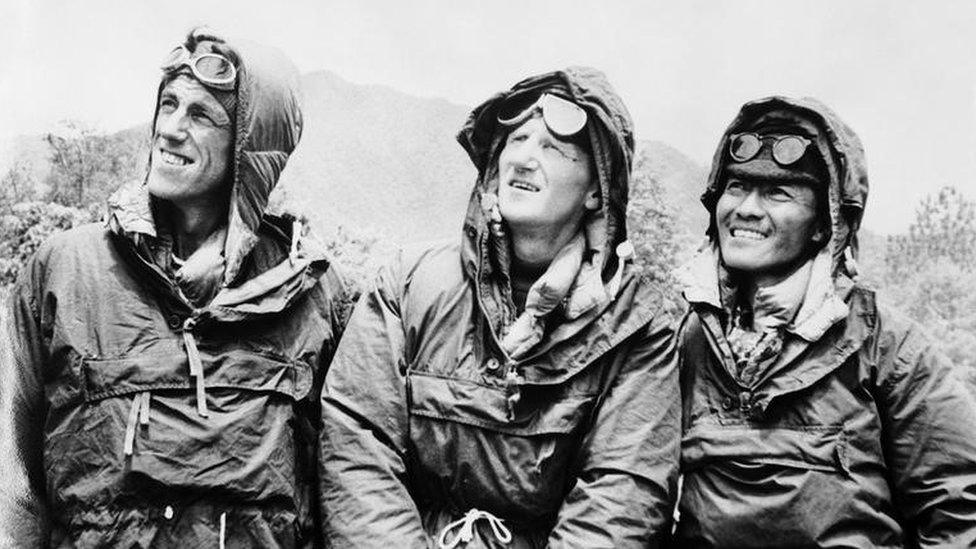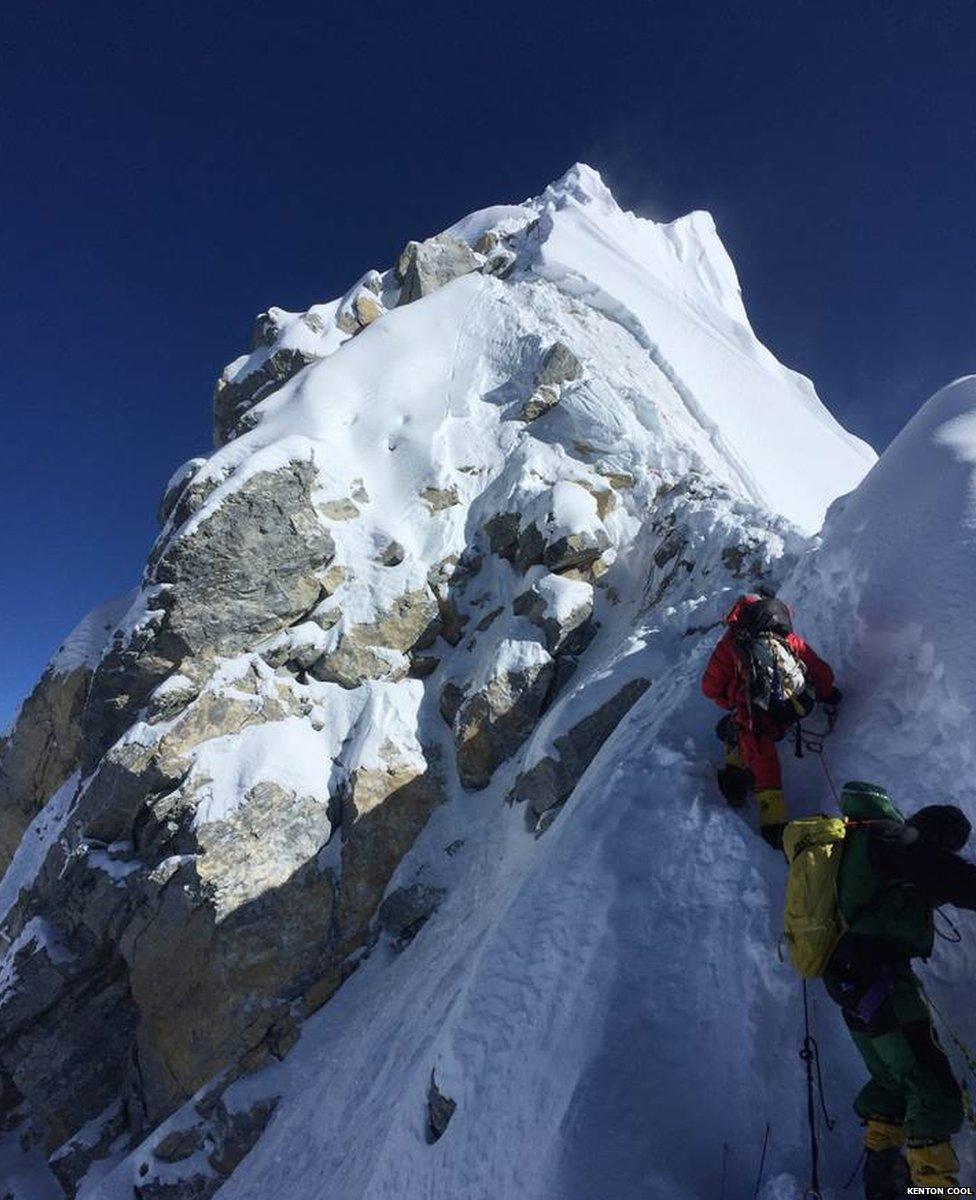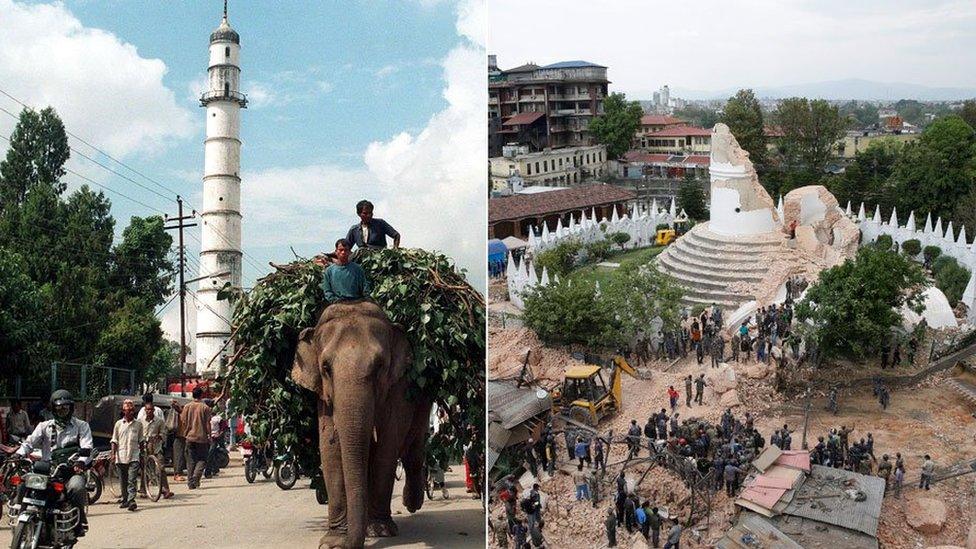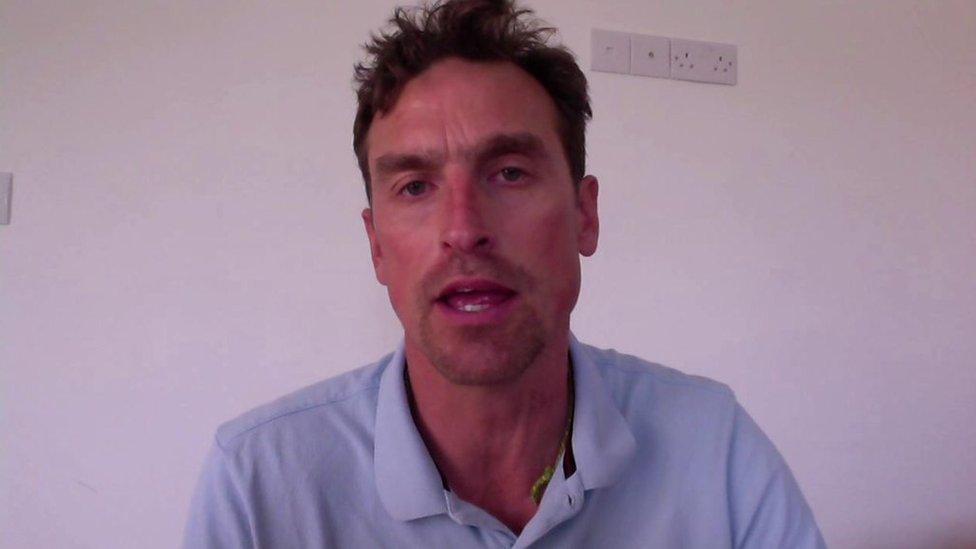Everest's Hillary Step: Has it gone or not?
- Published

The Hillary Step as it looked last week, in a photo taken by Tim Mosedale
Days after a British mountaineer claimed that a famous rock feature near the summit of Mount Everest had disintegrated, two Nepali climbers have contradicted him.
So has the Hillary Step collapsed, and if not, why the confusion?
Surely it's either there or it's not?
The Hillary Step is a 12-metre (39ft) rock face, forming the last great obstacle before the summit of Everest - wouldn't it be hard to miss?
Yes, says British mountaineer Tim Mosedale, who reached the summit on 16 May for the sixth time. He confirmed the step's disappearance to the BBC on Sunday, saying it was "definitely not there any more", and was most likely a victim of Nepal's 2015 earthquake.
Mount Everest's famous Hillary Step 'destroyed'
Lean-burn physiology gives Sherpas peak-performance
But Pasang Tenzing Sherpa, a high-altitude guide who just returned from the mountain, insisted to BBC Nepali on Monday that the step was intact.
Ang Tshering Sherpa, president of Nepal Mountaineering Association, agreed. "Nothing has happened to Hillary Step as a result of the earthquake," he told BBC Nepali. "It's only that only a small portion of the rock is visible, the rest is under snow."
But Mr Mosedale and other climbers will not be swayed. "It's gone," he said adamantly again on Monday evening, via Facebook. "There's not enough snow to cover what was a MASSIVE block."
He has posted pictures which he says proves his point, and he plans to take more as he heads back to the summit on Monday evening, guiding other climbers.
Why does it matter?

Named after Edmund Hillary (L) the Step is a part of high mountain legend
Mount Everest is 8,848m high. Why are people debating over a such a tiny proportion of it?
Mr Mosedale called the final Step part of "mountaineering folklore".
It was named after New Zealand's Edmund Hillary, who, along with local Sherpa Tenzing Norgay, became the first to successfully climb to its top in 1953.
"We had always thought of it as the obstacle on the ridge which could well spell defeat," Hillary wrote in his book, High Adventure.
Decades later, as many more climbers sought to follow in their footsteps, the spot became the site of human traffic jams, with climbers sometimes waiting two or three hours to pass.
Experienced Everest climber Ed Viesturs wrote in the New York Times, external that anticipation reaches its own high point at this juncture.
"Climbers run out of bottled oxygen and collapse, or they push upward long after a sensible turnaround deadline and end up descending in the dark, or they succumb to hypothermia and frostbite simply because they're forced to stand in place for hours, waiting their turn," he said.
And yet it held a special place in many climbers hearts. "There's an aesthetic issue at stake," added Mr Viesturs. "It's the final test you pass to earn the summit."
So again, why the confusion?
It could be that people have a different idea of "disappeared".
It could be that locals are not ready to write it off.
It could be that the snow is making it hard to see exactly what has changed.
Is this a bolt from the blue?

British mountaineer Kenton Cool took this photo of the Step last year, he said it looked "different"
No. There have been rumours of its demise for some time.
Back in May 2016, pictures posted by the American Himalayan Foundation appeared to show that the Hillary Step had changed shape.
British mountaineer Kenton Cool, who has climbed Everest 12 times, told the BBC he was beneath the step last year and it looked different.
After seeing the latest pictures from Mr Mosedale's recent ascent, he became convinced. "It looks like the step has altered. It does not look to be quite the same formidable, vertical step that it was three of four years ago."
If it has gone, could it be a good thing for climbers?
British mountaineer Kenton Cool says the Hillary Step was a dangerous bottleneck.
Yes and no.
The final hurdle is currently passable because of a snow ridge, which has formed to its right and which climbers are currently using as an alternative route.
Mountaineers claim the snow-covered slope will be much easier to climb than the notorious rock-face, but have warned that it could create even more of a bottleneck.
It is a serious worry for those already battling low oxygen and frostbite conditions at the top of the world.
And if the snow were to subside, the climb might prove much more tricky.
The routes up Everest are already very hazardous. Four climbers were killed on Sunday.
Will we ever know for sure?
"It is quite difficult to be 100% sure [right now]," said Mr Cool. "If you were to put a gun to my head, I would say, yes, I think there has been some change to the Hillary Step."
With the mountaineering world all talking about it, we can expect more images in days to come, more detailed comparisons, and a much more solid answer.
- Published15 May 2015

- Published22 May 2017
